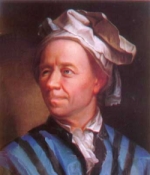Andrew Wiles Fermat Last Theorem Pdf To Jpg


The 1670 edition of ' Arithmetica includes Fermat's commentary, particularly his 'Last Theorem' ( Observatio Domini Petri de Fermat). In, Fermat's Last Theorem (sometimes called Fermat's conjecture, especially in older texts) states that no three a, b, and c satisfy the equation a n + b n = c n for any integer value of n greater than 2.
The cases n = 1 and n = 2 have been known to have infinitely many solutions since antiquity. This theorem was first by in 1637 in the margin of a copy of where he claimed he had a proof that was too large to fit in the margin. Was released in 1994 by, and formally published in 1995, after 358 years of effort by mathematicians.
The n-dimensional Cube---A New Way to Prove the Fermat's Last Theorem. Gregory Isaacs Red Rose For Gregory Rarest more. Professor Andrew Wiles used such mathematical tools as the Kolyvagin-Flach method and the.
The proof was described as a 'stunning advance' in the citation for his award in 2016. The proof of Fermat's Last Theorem also proved much of the and opened up entire new approaches to numerous other problems and mathematically powerful techniques. The unsolved problem stimulated the development of in the 19th century and the proof of the in the 20th century.
It is among the most notable theorems in the and prior to its proof, it was in the as the 'most difficult mathematical problem', one of the reasons being that it has the largest number of unsuccessful proofs. Contents • • • • • • • • • • • • • • • • • • • • • • • • • • • • • • • • • • • Overview [ ] Pythagorean origins [ ] The Pythagorean, x 2 + y 2 = z 2, has an infinite number of positive solutions for x, y, and z; these solutions are known as. Around 1637, Fermat wrote in the margin of a book that the more general equation a n + b n = c n had no solutions in positive integers, if n is an integer greater than 2. Although he claimed to have a general of his conjecture, Fermat left no details of his proof, and no proof by him has ever been found. His claim was discovered some 30 years later, after his death. This claim, which came to be known as Fermat's Last Theorem, stood unsolved in mathematics for the following three and a half centuries.
Night At The Museum 3 Full Movie Dual Audio Download on this page. The claim eventually became one of the most notable unsolved problems of mathematics. Attempts to prove it prompted substantial development in, and over time Fermat's Last Theorem gained prominence as an. Subsequent developments and solution [ ] With the special case n = 4 proved by Fermat himself, it suffices to prove the theorem for n that are (this reduction is considered trivial to prove ). Over the next two centuries (1637–1839), the conjecture was proved for only the primes 3, 5, and 7, although innovated and proved an approach that was relevant to an entire class of primes. In the mid-19th century, extended this and proved the theorem for all, leaving irregular primes to be analyzed individually.
Building on Kummer's work and using sophisticated computer studies, other mathematicians were able to extend the proof to cover all prime exponents up to four million, but a proof for all exponents was inaccessible (meaning that mathematicians generally considered a proof impossible, exceedingly difficult, or unachievable with current knowledge). [ ] Entirely separately, around 1955, Japanese mathematicians and suspected a link might exist between and, two completely different areas of mathematics.
Known at the time as the Taniyama–Shimura–Weil conjecture, and (eventually) as the, it stood on its own, with no apparent connection to Fermat's Last Theorem. It was widely seen as significant and important in its own right, but was (like Fermat's theorem) widely considered completely inaccessible to proof. [ ] In 1984, noticed an apparent link between these two previously unrelated and unsolved problems. An outline suggesting this could be proved was given by Frey. The full proof that the two problems were closely linked, was accomplished in 1986 by building on a partial proof by who proved all but one part known as the 'epsilon conjecture' (see: and ).